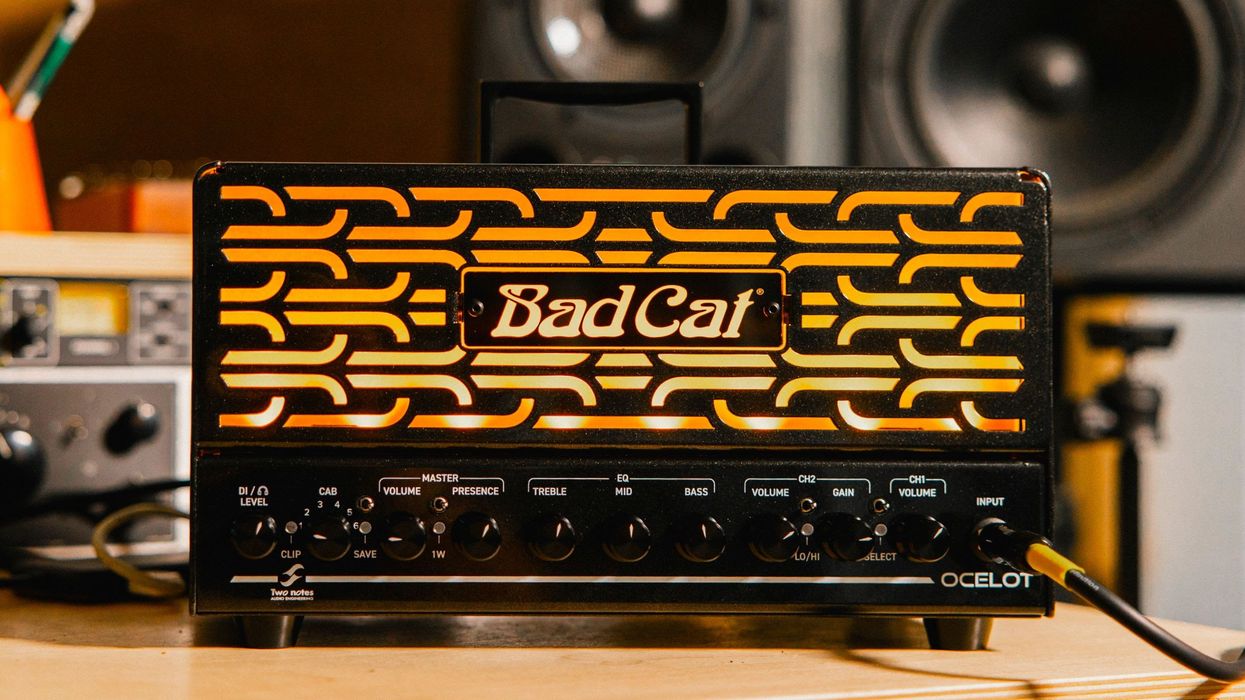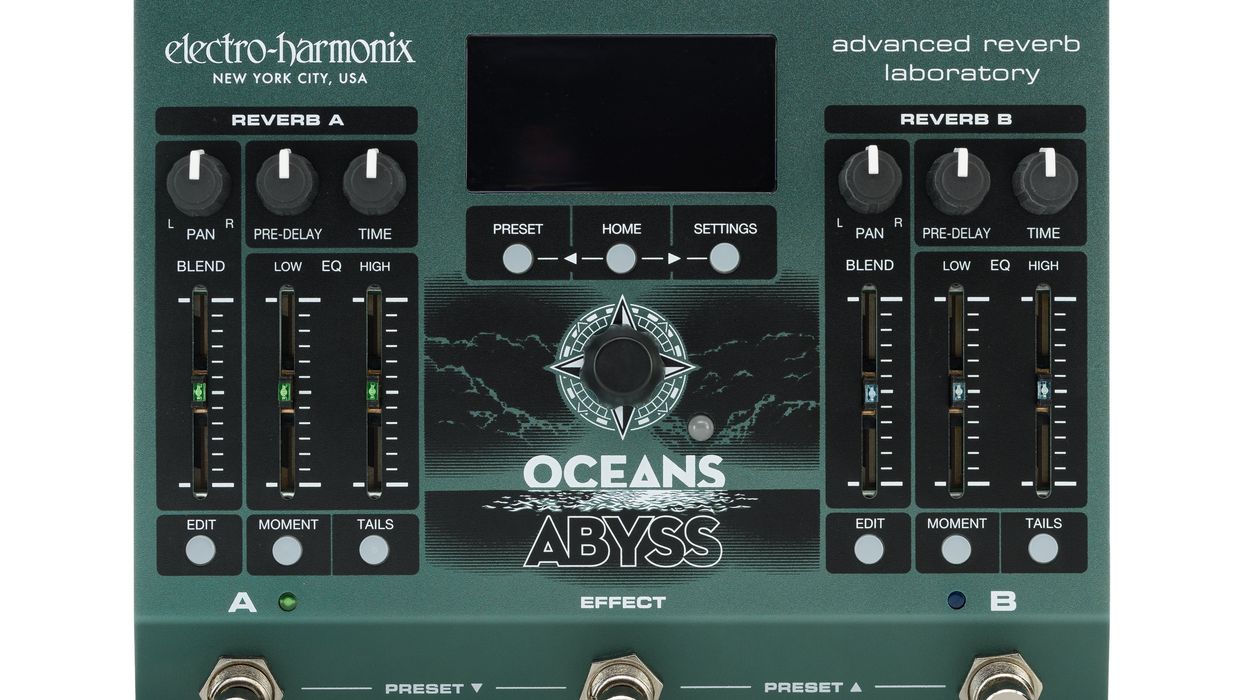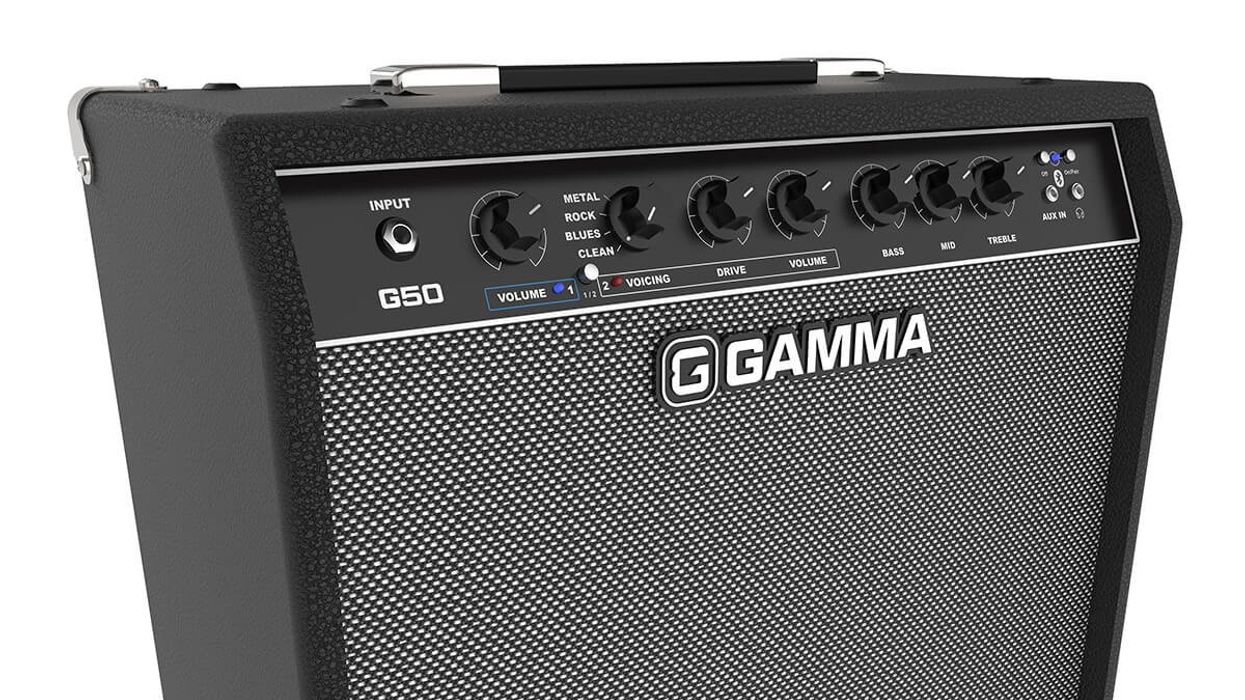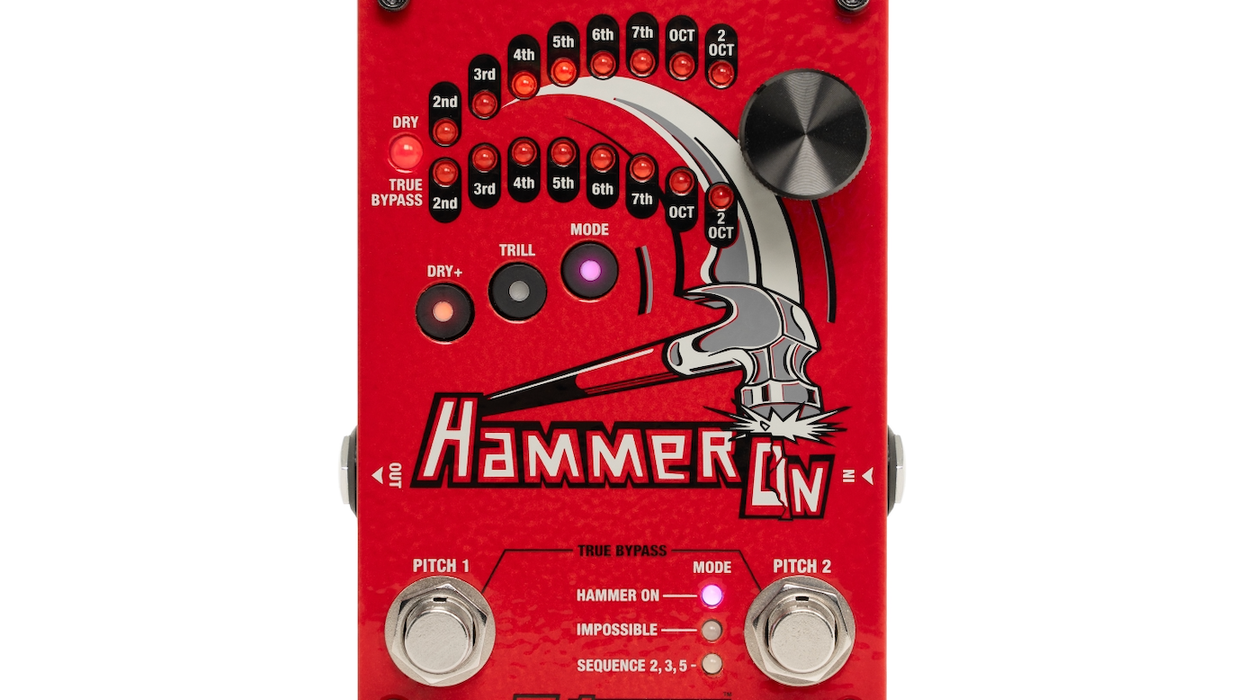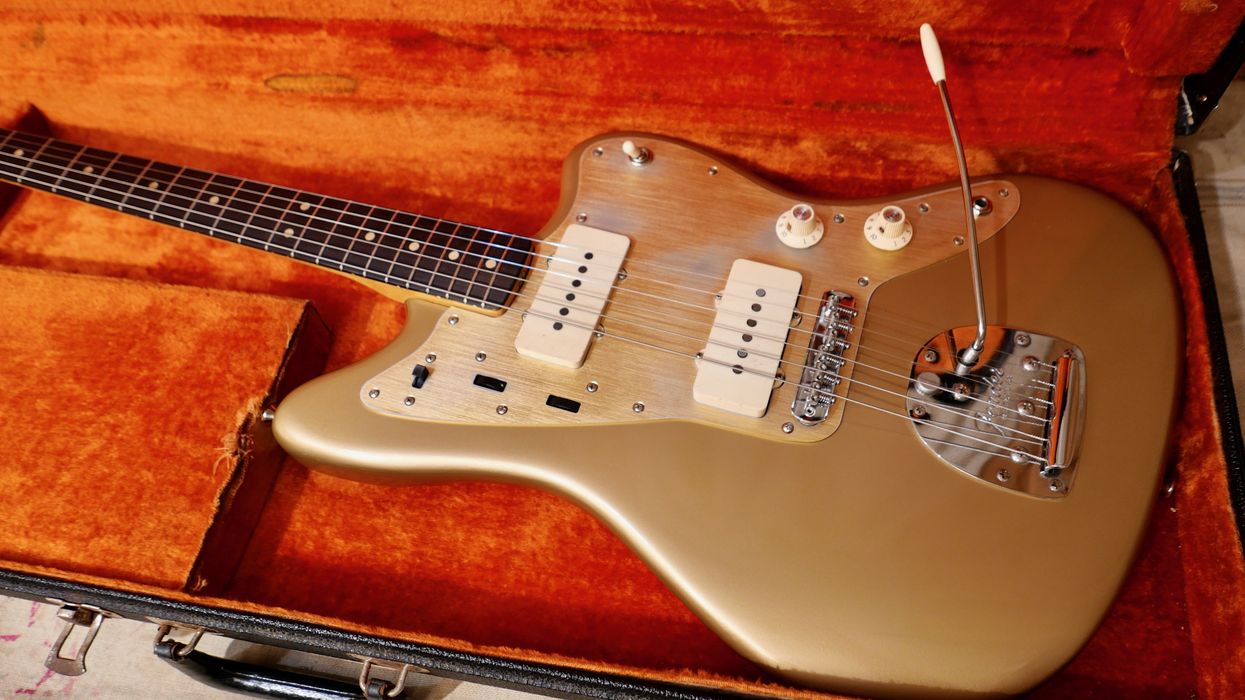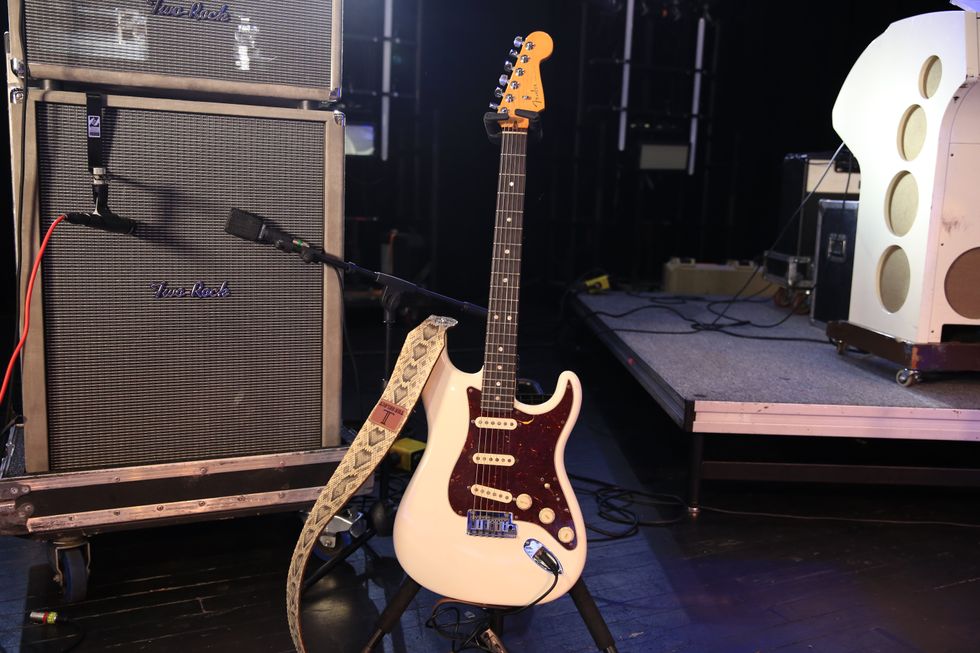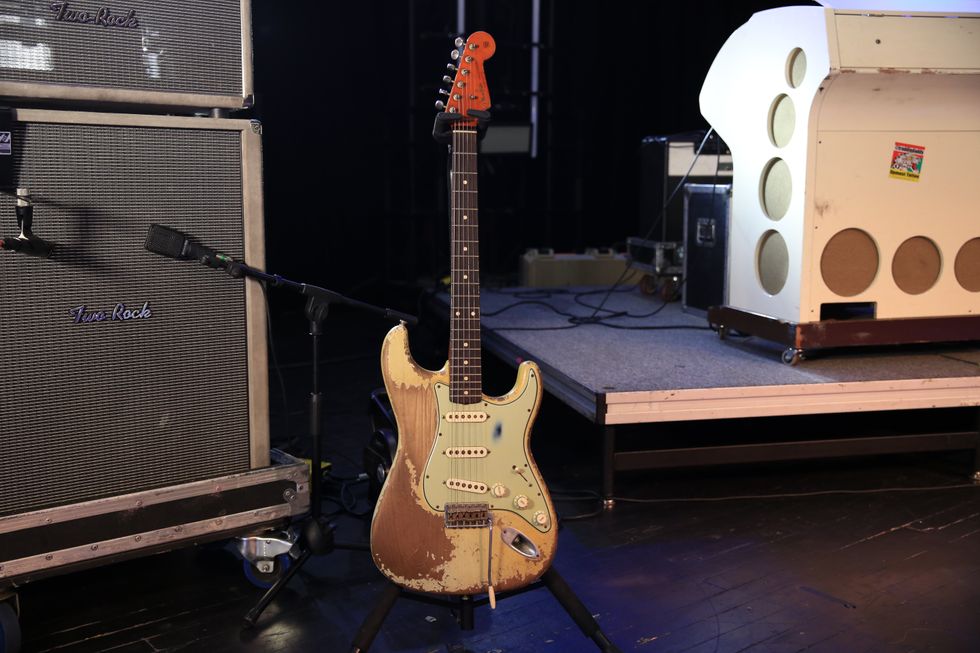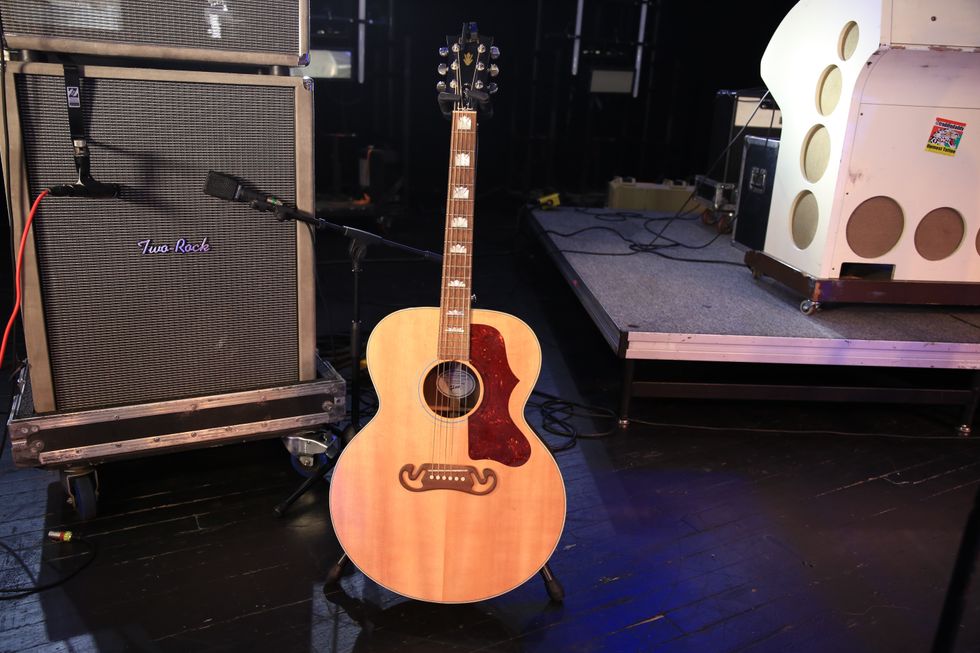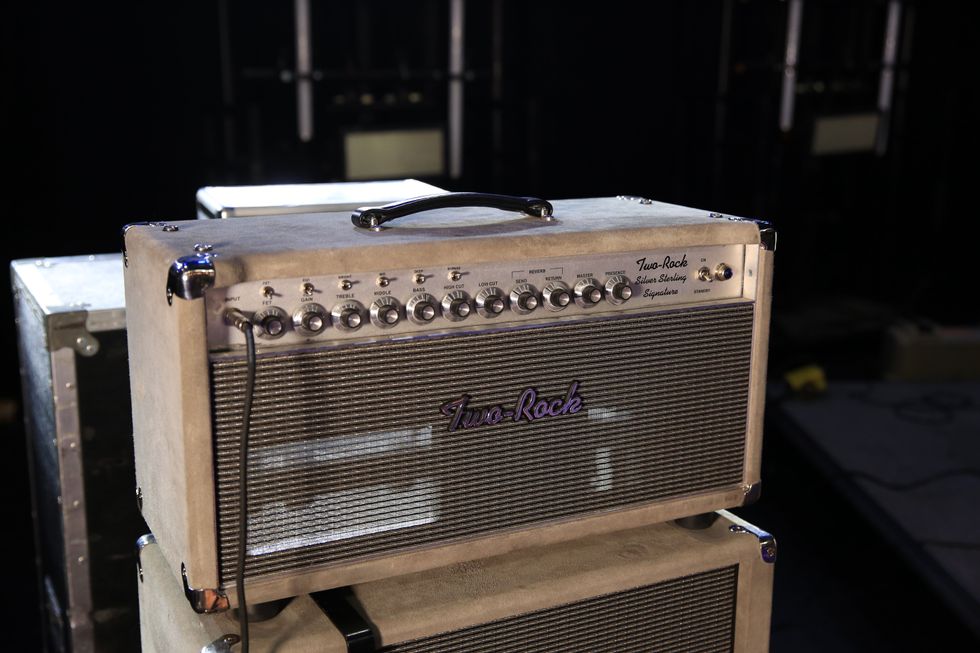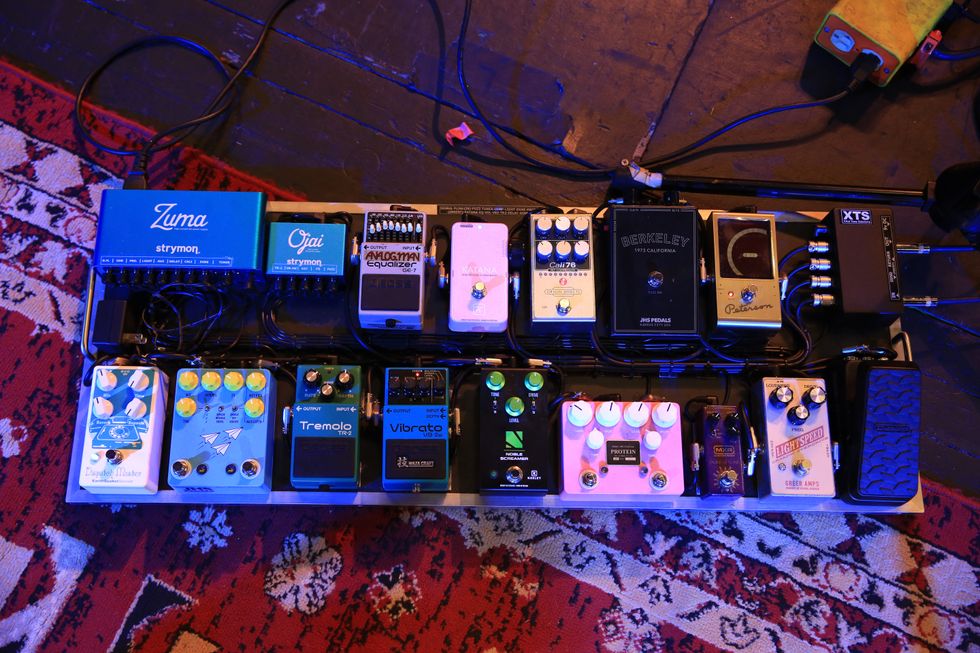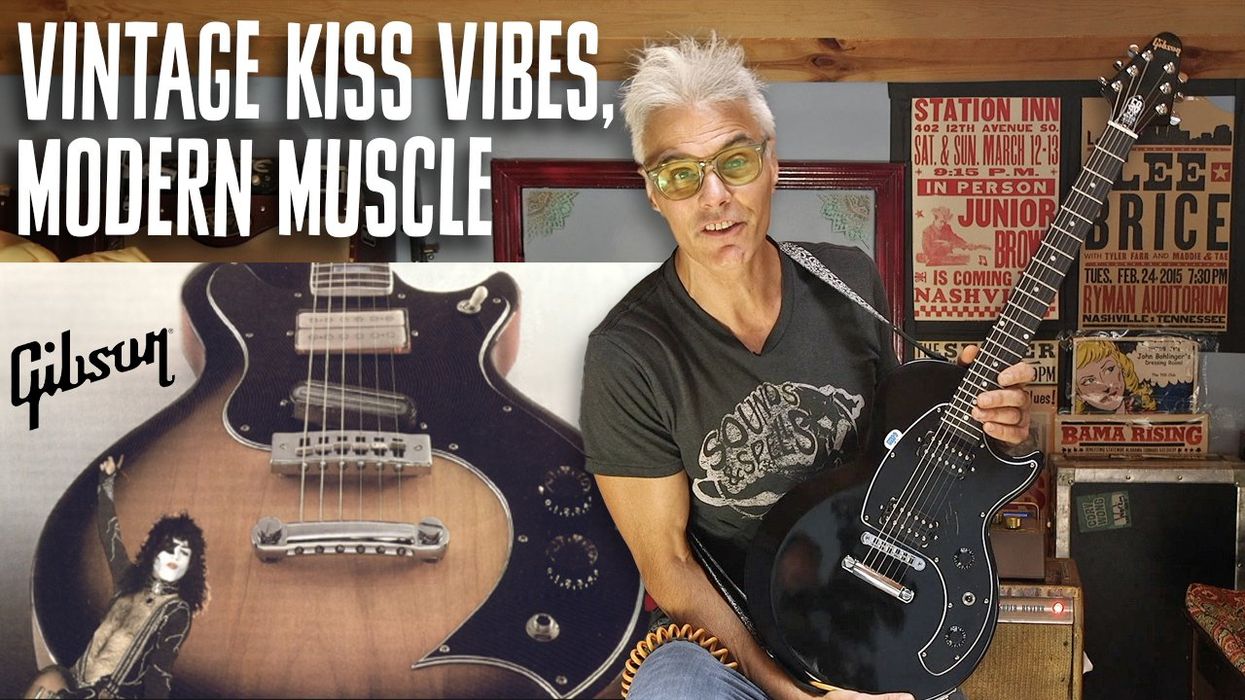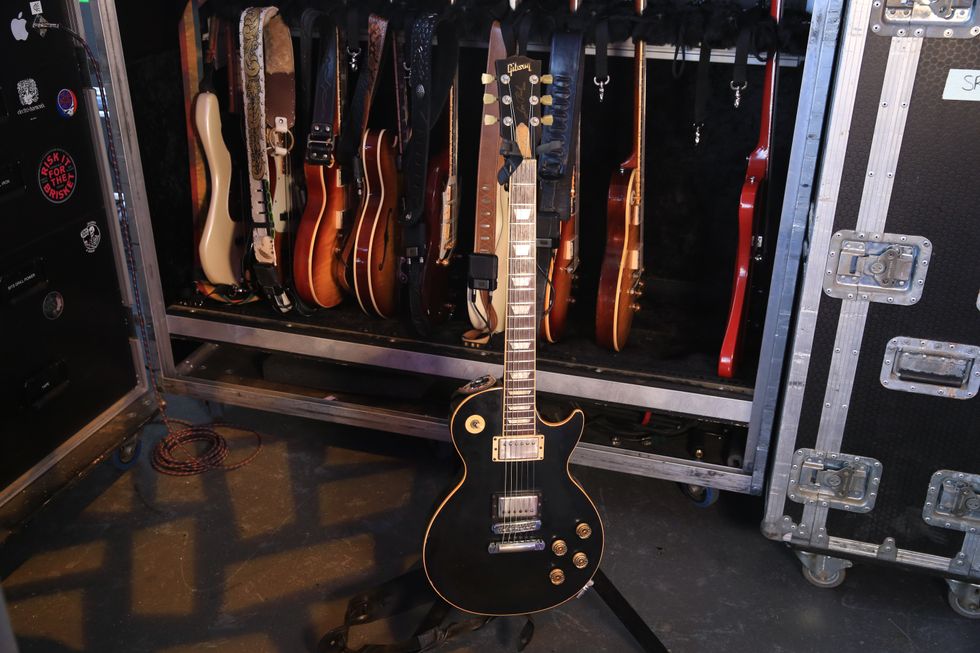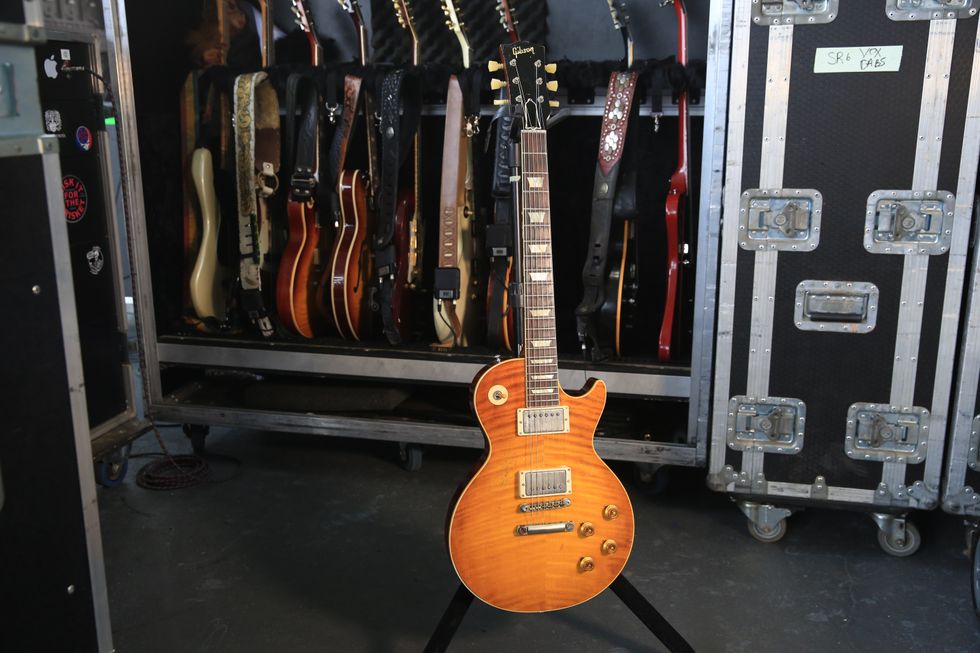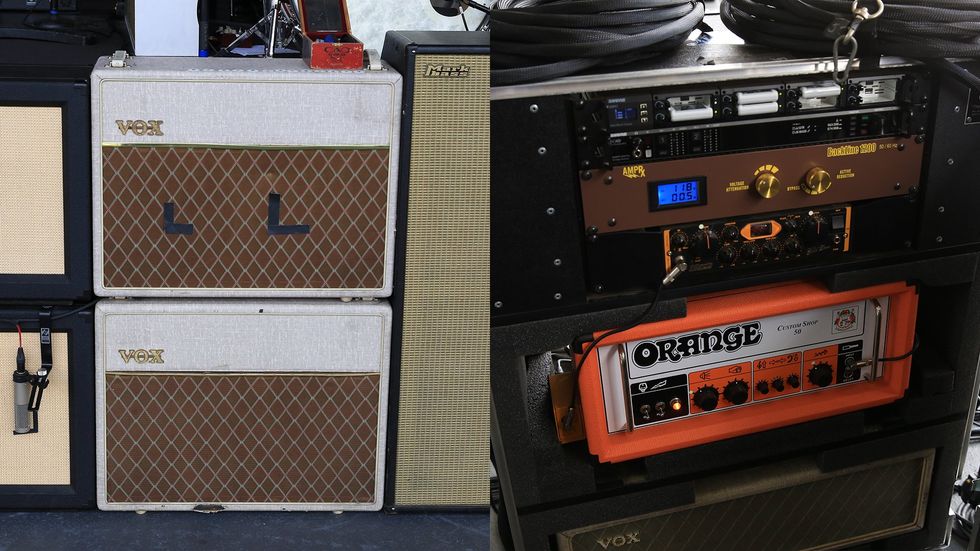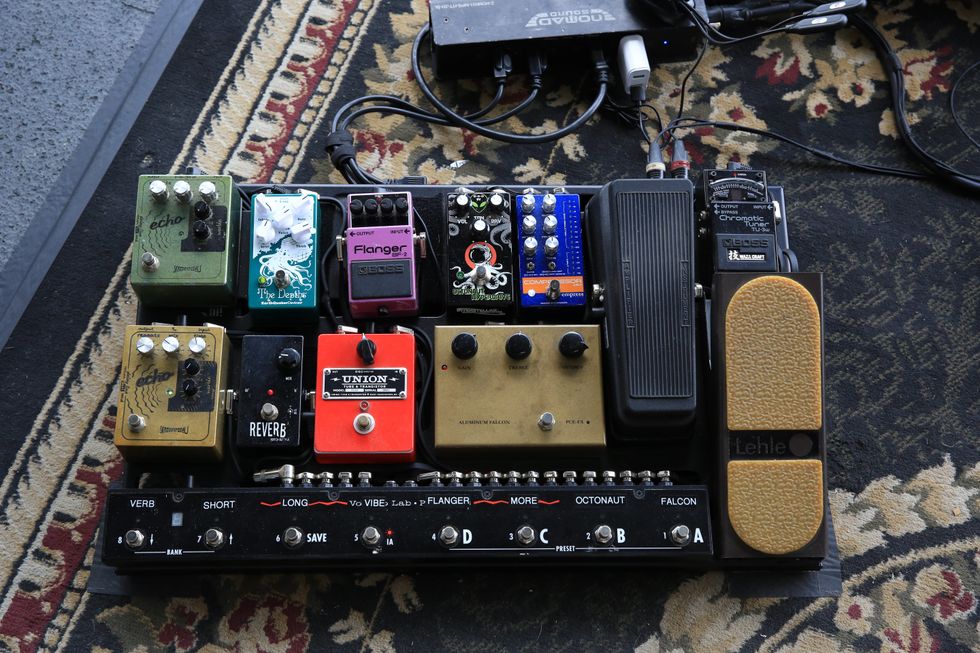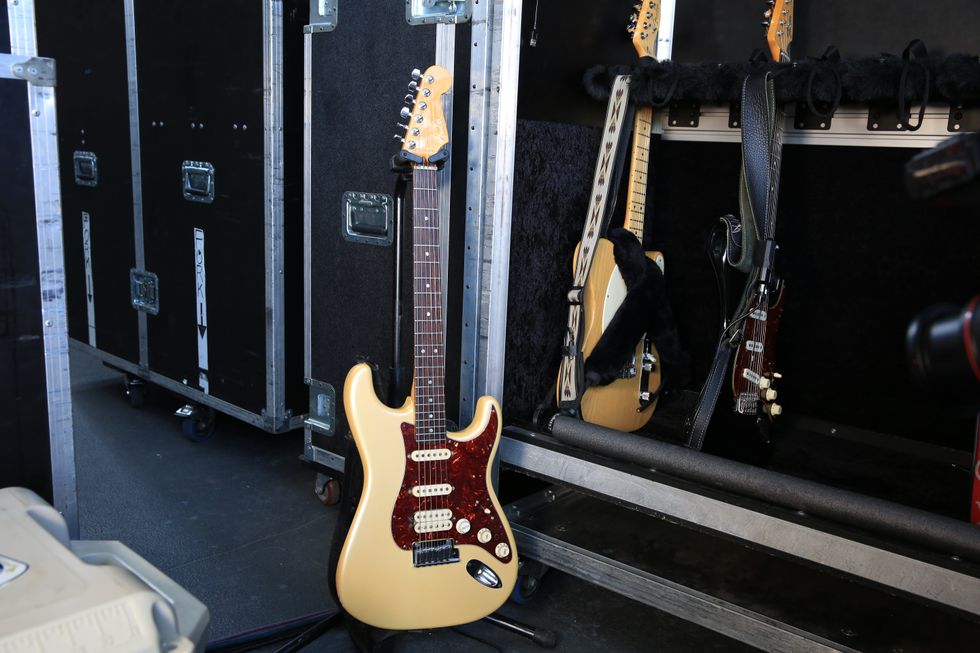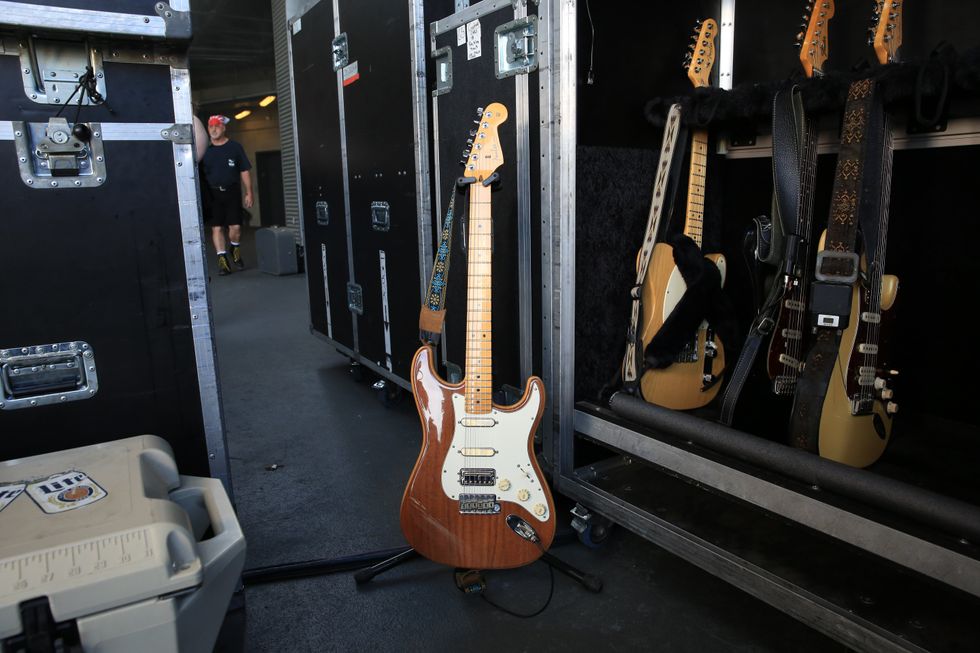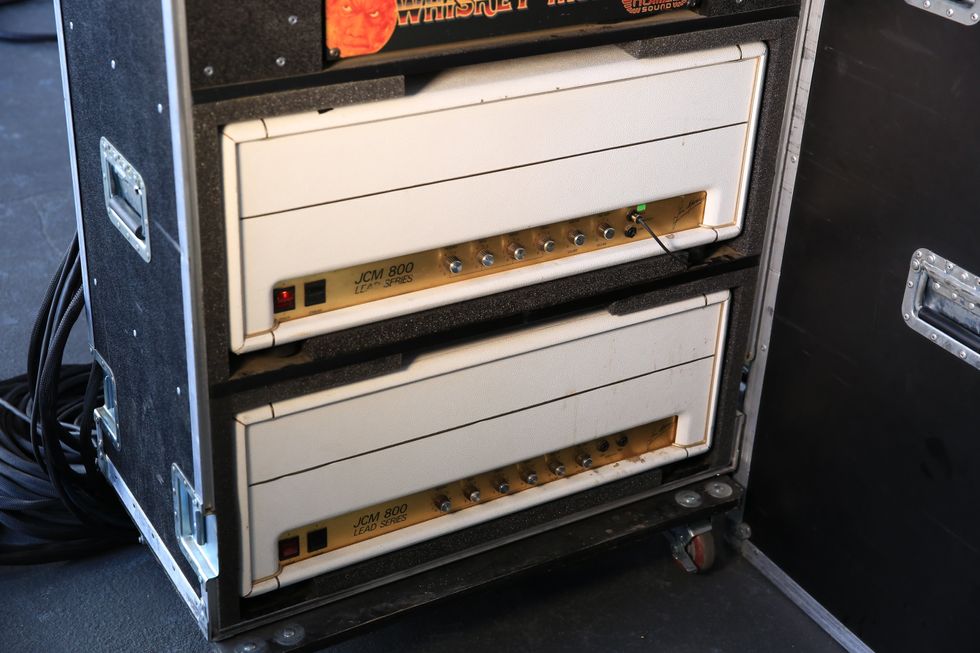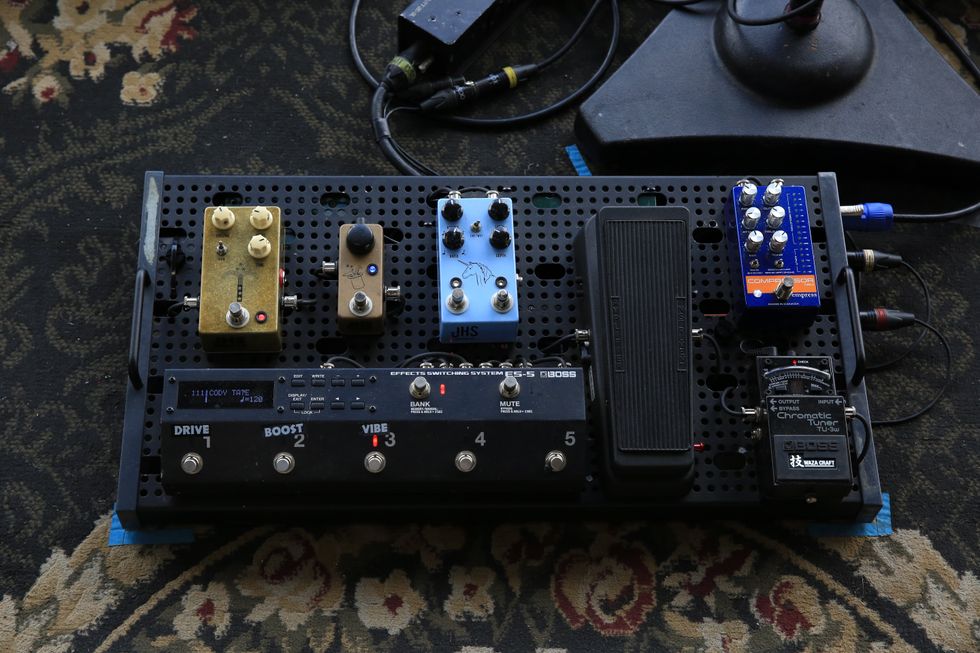Back around the turn of the millennium, Orange introduced the diminutive, solid-state Crush amps. Orange put a whole lot of the design vibe from their legendary tube-driven siblings into the Crush series. But the little amps had a way of sounding pretty potent and chimey too, and that recipe made the amps a mainstay in the competitive practice amp market. The Crush series has grown and evolved over the years, and the recent Crush PiX series added a slew of onboard effects. But the latest evolution of the line—Crush Pro—consists of bigger, more powerful amps with fewer onboard features, and both the 60-watt combo reviewed here (CR60C) and its 120-watt cousin (CR120C) are clearly designed for the stage.
Crushing Detail
This Crush Pro combo is unmistakably Orange—right down to the flagrantly tangerine vinyl and odd symbols accenting the alpine white faceplate. The amp is loaded with a 60-watt Voice of the World 12" speaker that lurks behind the classic wheat grille cloth in a semi open-back cabinet. For a combo amp, the CR60C isn’t all that heavy, weighing just shy of 45 pounds. And it’s about the size of a Fender Princeton—slightly under 18" x 22" x 12"—which is ideal for just about any stage. Should you want to power an external cabinet, there’s a speaker jack located on the back of the unit.
Where the earlier Crush PiX took the mega-versatility route, with onboard tuners, tremolos, flangers, and more, Crush Pro amps are much more straightforward and no-nonsense. Removing these features undoubtedly helps minimize manufacturing costs and thus lower the street price, but it also makes the Pros much more practical stage amps and more useful to guitarists who prefer pedalboards. While both the CR60C and CR120C are 2-channel amps, the only effects you’ll find on them is a digital reverb that can be switched between hall, plate, and spring. Both the channels and the reverb are footswitchable, and additional effects can be run through the FX loop. There’s also a master volume that allows you to dial up spotless clean tones and savage crunch with relatively equal output when switching between the two channels.
Sweet Orange Flavor
While Orange amplifiers are famously treasured for massive dirty tones, they’re less famously capable of bright, snappy clean tones that I’ve grown to love. Having played and owned a handful of Orange amplifiers, I would say that the CR60C’s clean channel does a great job of replicating the clean characteristics of Orange’s tube amps.
Though the clean channel has just two EQ knobs—bass and treble—they offer more than enough control to shape a wide spectrum of tones, whether you’re using single-coils or humbuckers. I particularly enjoyed the big and blustery low end I got from my Les Paul, but I was just as impressed with how the Orange gave me the ability to rein in the typically booming Gibson.
Single-coils bring out the treblier qualities of the clean channel and require a bit more EQ attention. But once I’d found the right treble setting, my Stratocaster and Telecaster sounded clear and alive in the expansive reverb I added to the signal.
When you’re using the clean channel, adding a dash of the emulated spring reverb can enhance jazzier progressions, while the plate reverb and the slight modulation that’s perceptible on the tail end is a natural fit for post-rock.
Ratings
Pros:
Streamlined, 2-channels design. Good clean tones. Dynamic reverb and dirty channels.
Cons:
Footswitch not included. Higher gain settings may leave you wanting more power.
Tones:
Ease of Use:
Build/Design:
Value:
Street:
$499
Orange Amplification CR60C
orangeamps.com
The CR60C’s dirty channel has a very modern sound that reveals similarities to its tube-powered Rockerverb cousin. The saturation range is huge too, from a little grit to a whole-hog serving of gain. Tamer gain settings have a nice high-end sizzle that’s a great match for single-coils. However, I found higher gains settings with single-coils to be a touch shrill, and these benefitted from a boost in bass EQ or a little extra tone-shaping from an overdrive pedal.
And speaking of overdrive, adding your favorite OD pedal to the mix is a great way to add a little extra heft and range to the CR60C’s sonic palette. The combo has an almost tube amp-like affinity for outboard effects, and they work well through the front end or in the FX loop. You’ll want to experiment with your pedals in both configurations to find out where each device works best.
Humbuckers are typically a great match for Orange crunch, and the CR60C is no exception. Maxing the Orange’s gain stage with a Les Paul delivers the sonic thrill and roar of putting a jet into a controlled dive. Like most Oranges, the overdrive and distortion have an inherent fuzziness that, in this case, may be enhanced by the op-amp circuitry. Playing with these tones is fun—especially if you’re into the rumbling, sustained riffs worshiped by stoner rockers. To properly cut loose with a neo-Sabbath ensemble, you might want to opt for the bigger CR120C. But the wide-open tone of the CR60C is still distinctly Orange and very powerful.
The Verdict
The CR60C is a stage-worthy amp for any player who craves Orange’s visual vibe, heavy tones, and can benefit from a 2-channel setup. At under $500, it’s very affordable too. While the CR60C won’t fool tube purists or deliver as much of the harmonic depth in high-gain situations as a tube-driven Orange, the CR60C sounds great independent of those comparisons, particularly when you factor in the sweet-sounding clean channel. This may be an Orange for players on a budget, but it has enough power and versatility to work on any stage and in any performance situation.








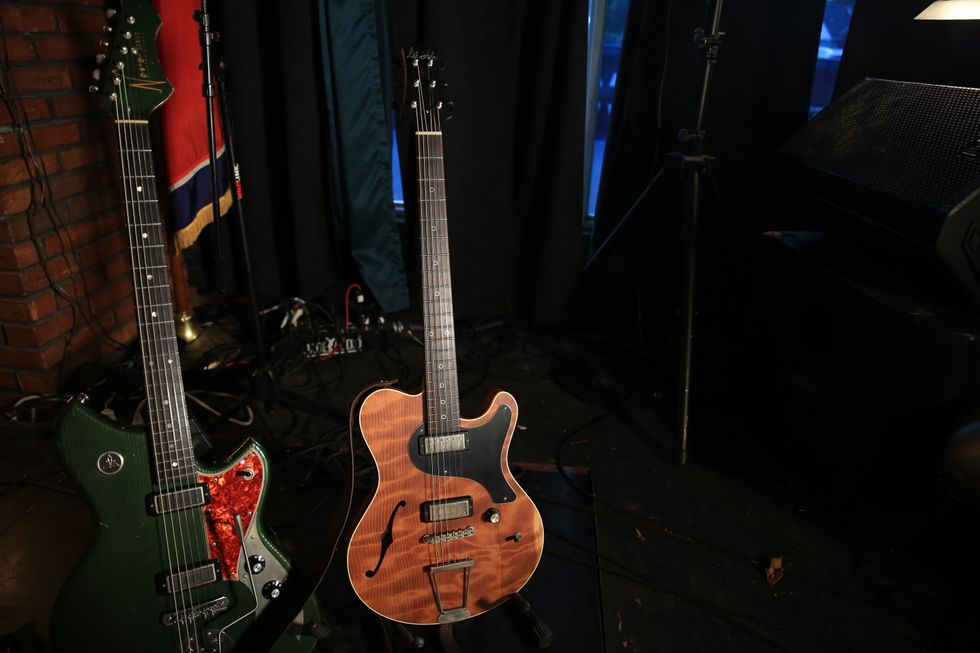
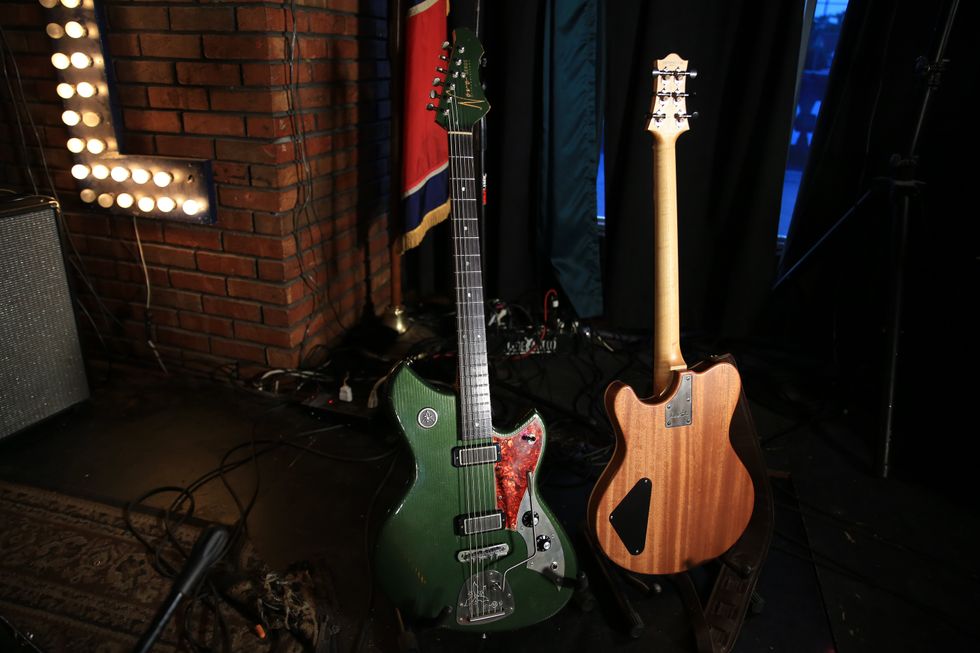
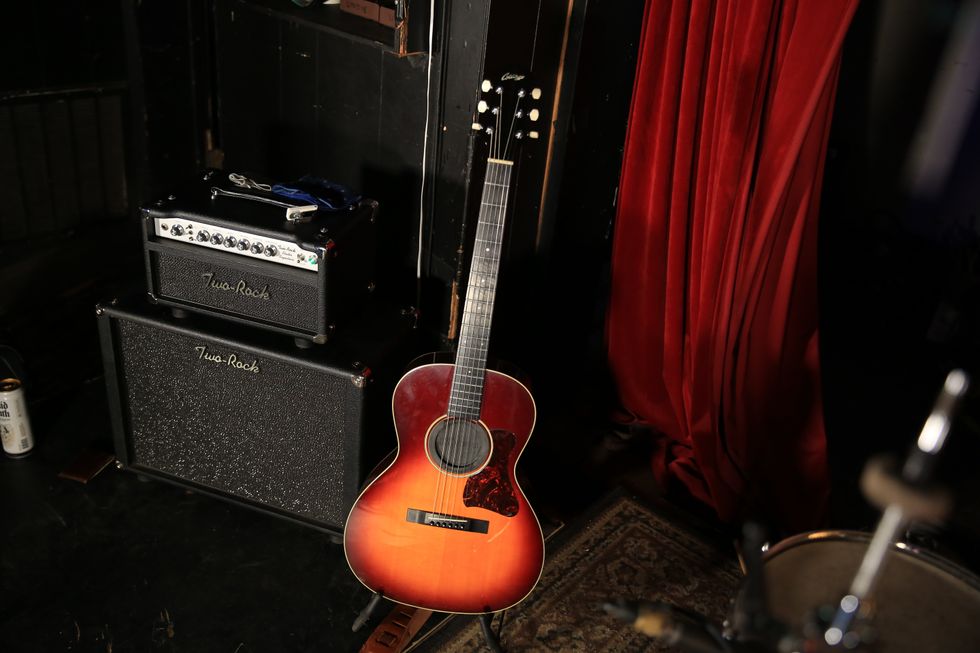
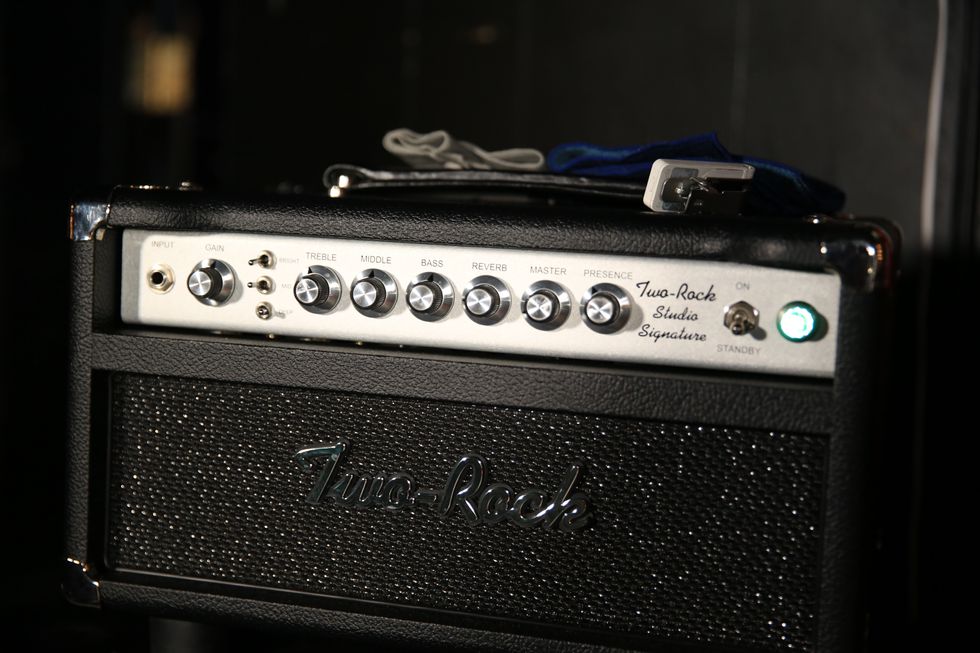
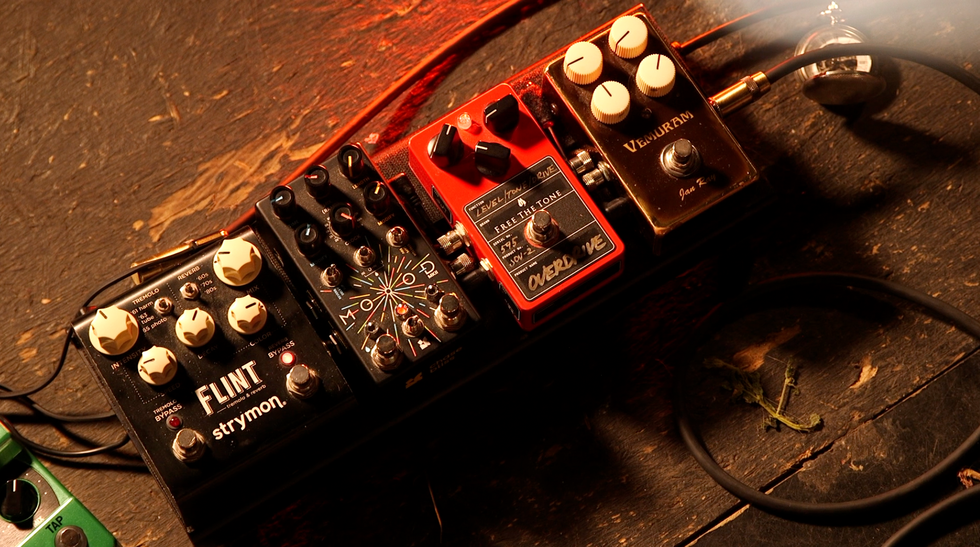
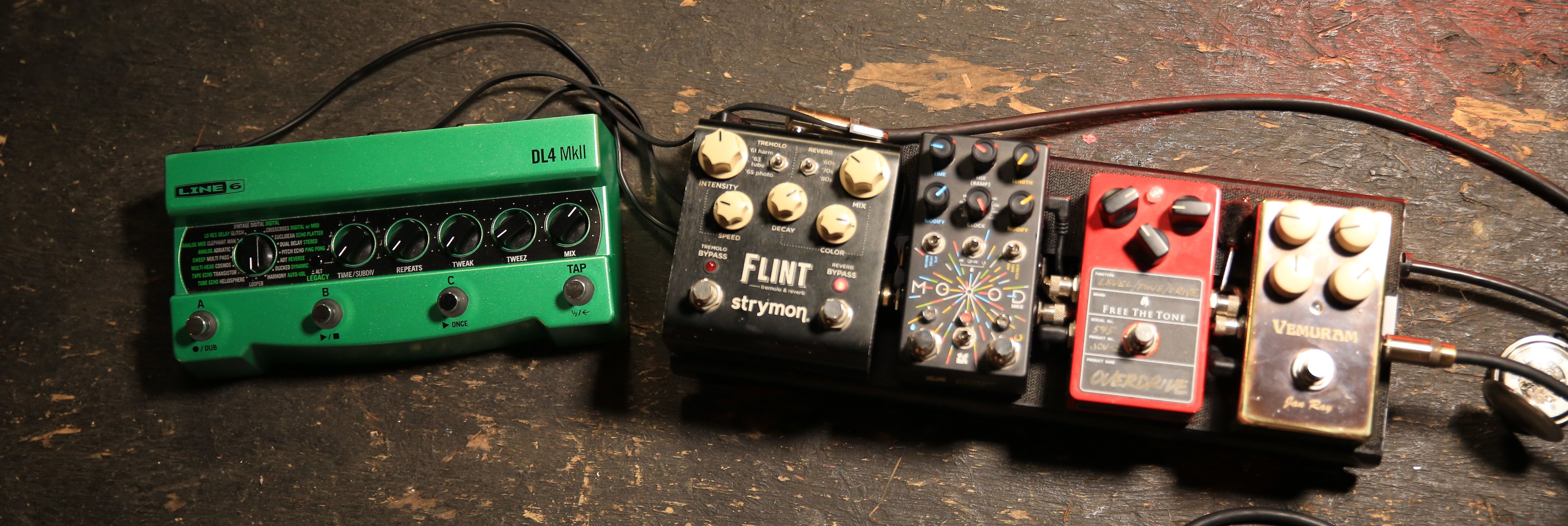 Miller’s Collings runs into a Grace Design ALiX preamp, which helps him fine-tune his EQ and level out pickups with varying output when he switches instruments. For reverb, sometimes he’ll tap the
Miller’s Collings runs into a Grace Design ALiX preamp, which helps him fine-tune his EQ and level out pickups with varying output when he switches instruments. For reverb, sometimes he’ll tap the 
